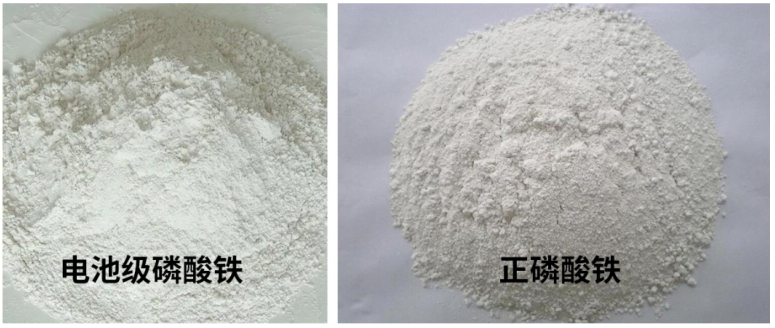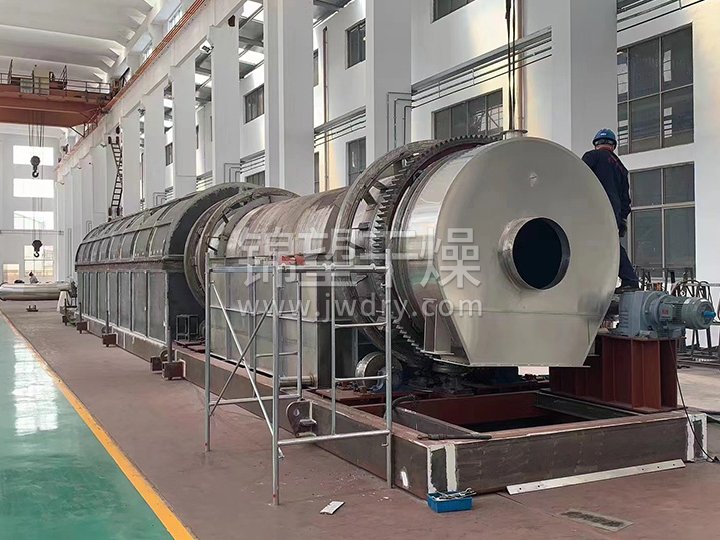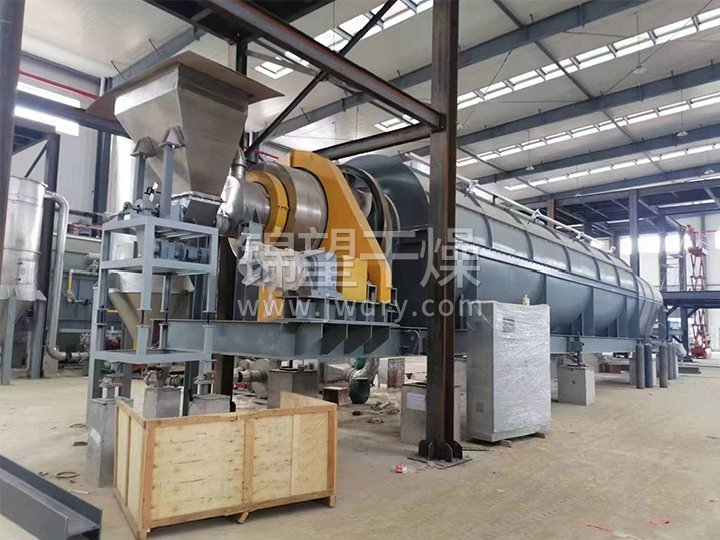Iron phosphate is an important chemical, which is widely used in chemical industry, building materials, machinery and other fields. In order to obtain high purity iron phosphate, we need to use drying and calcining equipment. Iron phosphate drying and calcining equipment is a process of drying and calcining iron phosphate using a specific calcining kiln. The aim of this process is to improve the purity and quality of iron phosphate to meet the requirements of the application. Drying and calcining of iron phosphate is a tedious process. Precise control is required to achieve the desired results.
1,Iron phosphate needs to be dried to minimize its moisture content. The drying process needs to be carried out under specific temperature and humidity conditions to avoid over-drying or oxidization of the iron phosphate.
2,The iron phosphate needs to be calcined to convert it into the corresponding oxide. The calcination process also needs to be carried out under specific temperature and oxidizing conditions to avoid reduction or oxidation of the iron phosphate.
In the calcination process, drying and calcination are often carried out continuously. The dried iron phosphate is transported to a calciner where it is subjected to a calcination process at elevated temperatures. The calcined iron phosphate is cooled and sieved to obtain a high purity iron phosphate product.
In the whole iron phosphate drying process, the selection and design of equipment is also very important. Suitable equipment can guarantee the production efficiency and product quality, and its design should take into account the physical and chemical properties of iron phosphate, production requirements and production costs and other factors.
In addition, the degree of automation of iron phosphate drying and calcination production line is also getting higher and higher. The automation control system can realize real-time monitoring and adjustment of process parameters to improve the output and quality of iron phosphate. At the same time, the automation control system can also improve production efficiency and reduce the impact of manual operation on production.
In conclusion, the iron phosphate drying and calcining equipment project is an important project, which can help producers obtain high purity iron phosphate products. When carrying out drying and calcination treatment, attention needs to be paid to controlling factors such as temperature, humidity and oxidizing conditions. At the same time, the selection and design of equipment also need to take into account factors such as physical and chemical properties, production requirements and production costs. In the future, with the development and application of automation technology, the production efficiency and quality of iron phosphate drying and calcination will be further improved.
● Equipment Introduction
The rotary calcining kiln generally consists of furnace cylinder, heating system, heat preservation system, feeding system and discharge control system. This equipment can be divided into gas calciner kiln and electric heating calciner kiln according to the different energy sources used. When the temperature of the furnace body is heated to the process requirements, the materials to be calcined by the feeding system will be fed into the furnace barrel. The heating system adopts electric heating radiation or burner heating, through the adjustment of electric heating power regulation or burner regulation to maintain the working temperature of each area of the furnace chamber. Furnace cylinder exists a certain tilt, so that the furnace cylinder in the slow rotation process, the material is calcined while slowly moving forward, the residence time of the material in the furnace cylinder can be controlled by adjusting the tilt angle of the furnace cylinder and the rotational speed. Finally, the material is sent to the next process by the discharge system at the end of the furnace.

● Characteristics
1、Heat source can be in the form of electric heating, gas or high temperature flue gas;
2、calcination temperature is set by area and controlled automatically.
3、Calcination time can be adjusted by means of rotating speed and inclination angle;
4、According to the calcination process curve and material characteristics, choose the calcination furnace in a variety of coping forms;
5、With accidental power failure coiling protection device;
6, high degree of automation, low operating intensity, good operating environment;
7, good insulation and sealing performance, heat loss is small;
8, solid structure, durable, long-term continuous operation;
9, simple maintenance, easy maintenance;
10, continuous operation, easy to dock with upstream and downstream equipment;
11, operating temperature up to 350-1050 ℃.



 Tel
Tel E-mail
E-mail Address
Address
